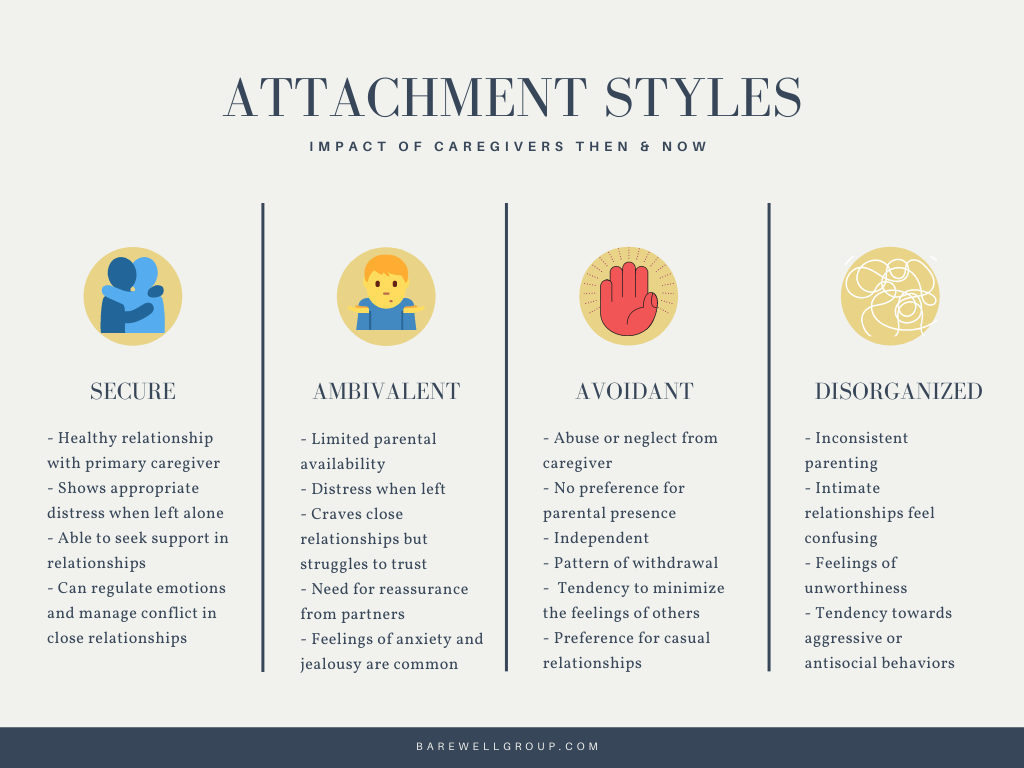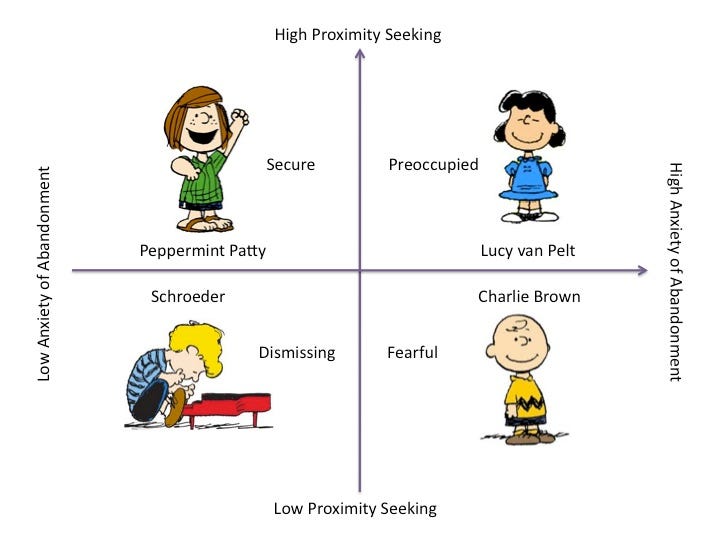Down The Rabbit Hole: Attachment Theory
An ongoing series of reader driven topics and quick research synthesis.

On this installment of "Down the Rabbit Hole" y’all had me analyzing the crap out of attachment theory. Now it’s time to synthesize and learn about attachment theory together.
10 quick fix facts on attachment theory, according to; Psych Central , Positive Psychology , BareWell and Crowe Associates Ltd.:
There are four attachment styles (the fourth disorganized attachment was added later in 1986); see image below:
John Bowlby and Mary Ainsworth are the pioneers of attachment theory. They describe attachment theory as how you initially bond with your primary caregivers and how it affects your relationships through out your life.
In 1950, Ainsworth took a position in Bowlby’s research at the Tavistock Clinic located in London, and later on conducted the strange situation experiment.
The Harlow experiment, in 1950 completed by Harry Harlow, found that infant monkeys’ ability to manage stress and emotional regulation directly correlated to the emotional attachment gained through cuddling from a caregiver.
Ambivalent (otherwise known as anxious) attachment harbors a deep fear abandonment, rejection and being left alone.
Avoidant attachment also has subsets called dismissive-avoidant, or anxious-avoidant but they are all a part of the insecure attachment style.
Disorganized attachment often stems from one or more abusive caregivers, leading a child to feel confused with both a sense of comfort and a sense of fear from said caregivers, resulting in disorganized behaviors.
Biology, trauma, and grief are some contributing factors to be aware of when applying attachment style theories.
At the heart of attachment theory is the secure base concept, where a child following a distressing event will seek and receive care from an attachment figure, and after experiencing comfort can then return to exploring.
There are four main characteristics of attachment; Proximity maintenance, safe haven, secure base, and separation distress; see image below:
Be sure to check out Down The Rabbit Hole: A Series Introduction for an overview of the series and what to expect, as well as a reminder to send in your topic suggestions for future publications. I’ll meet you down the rabbit hole y’all, what should I research next? Also, be sure to subscribe below so you don’t miss out on any future series topics.




